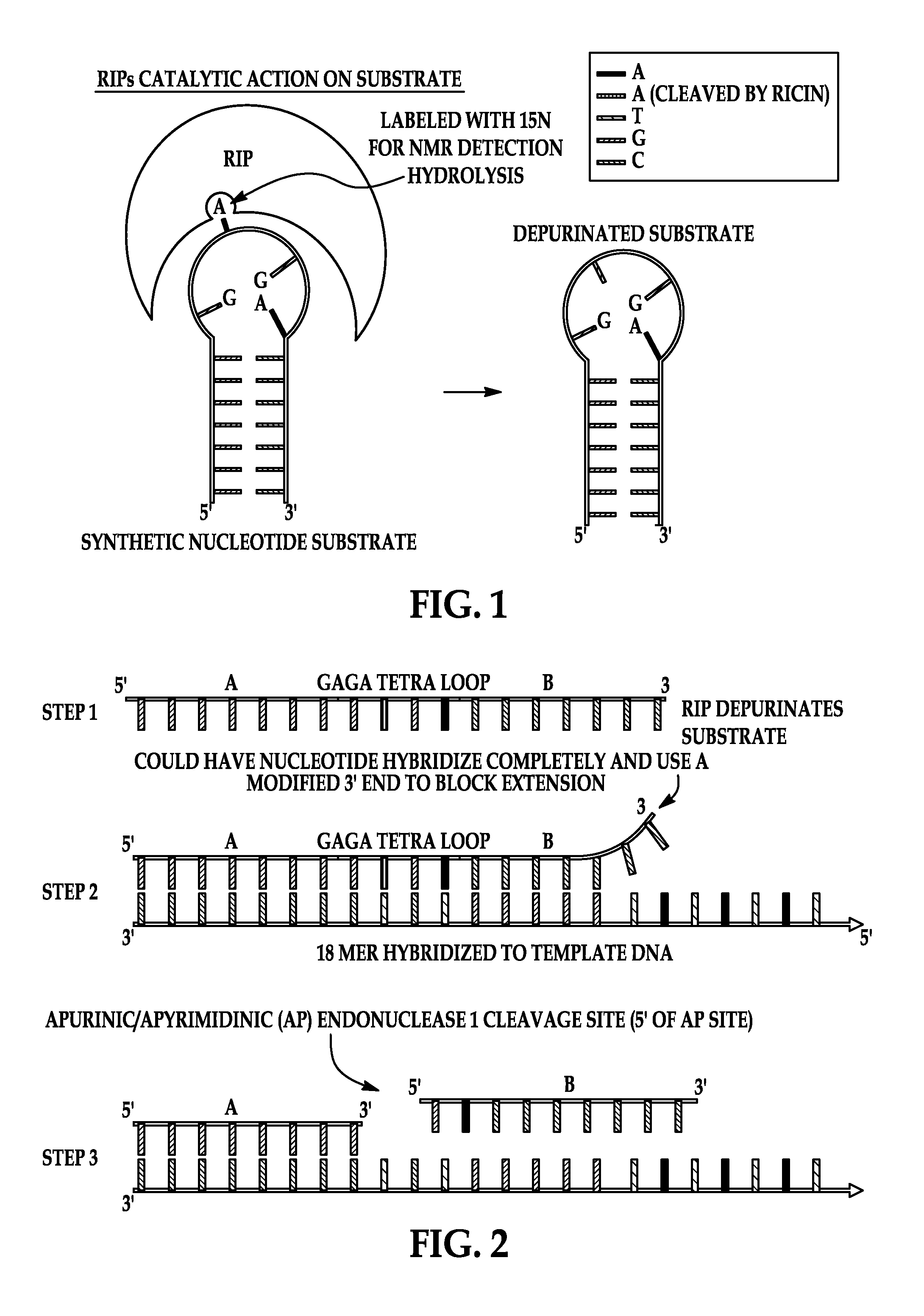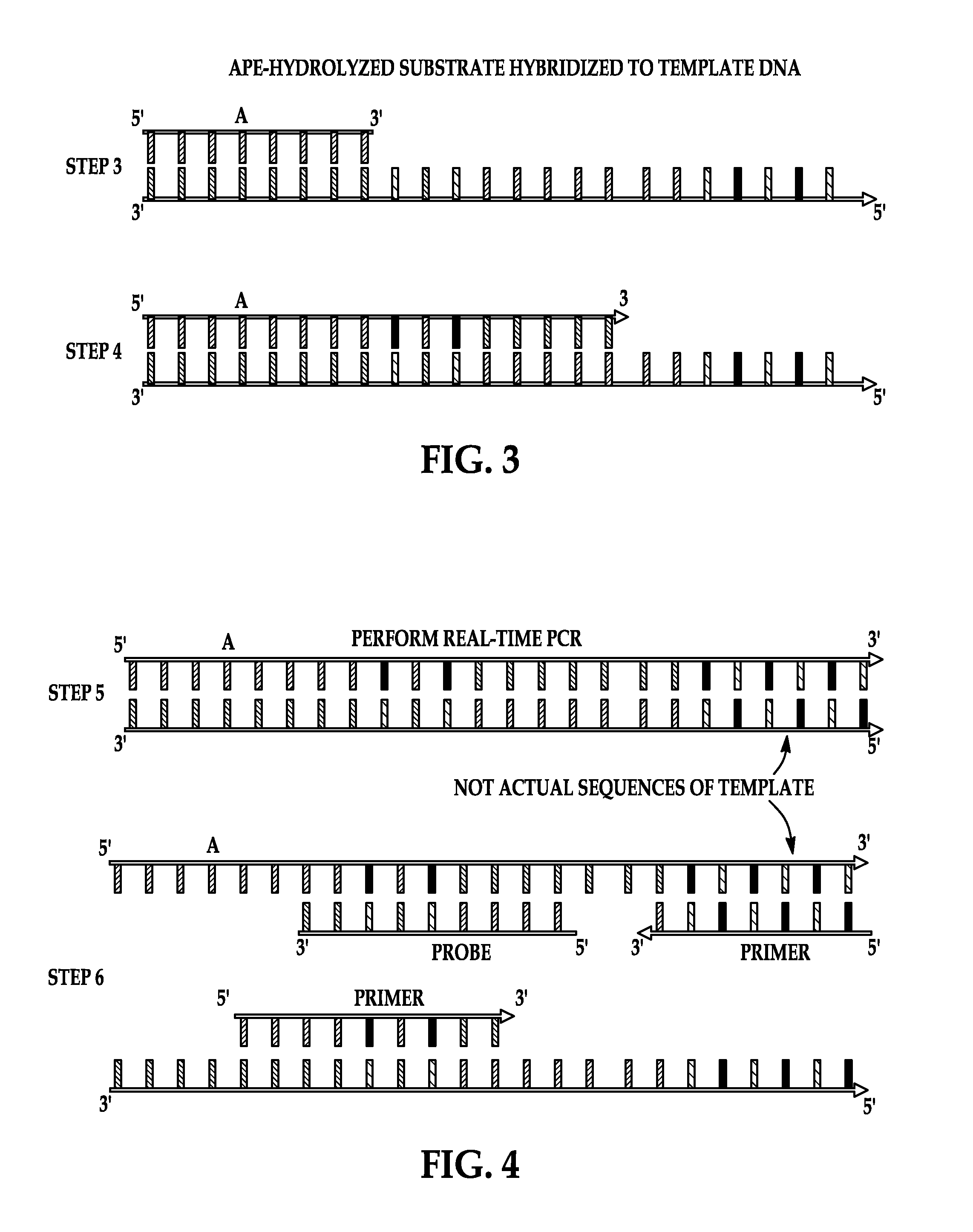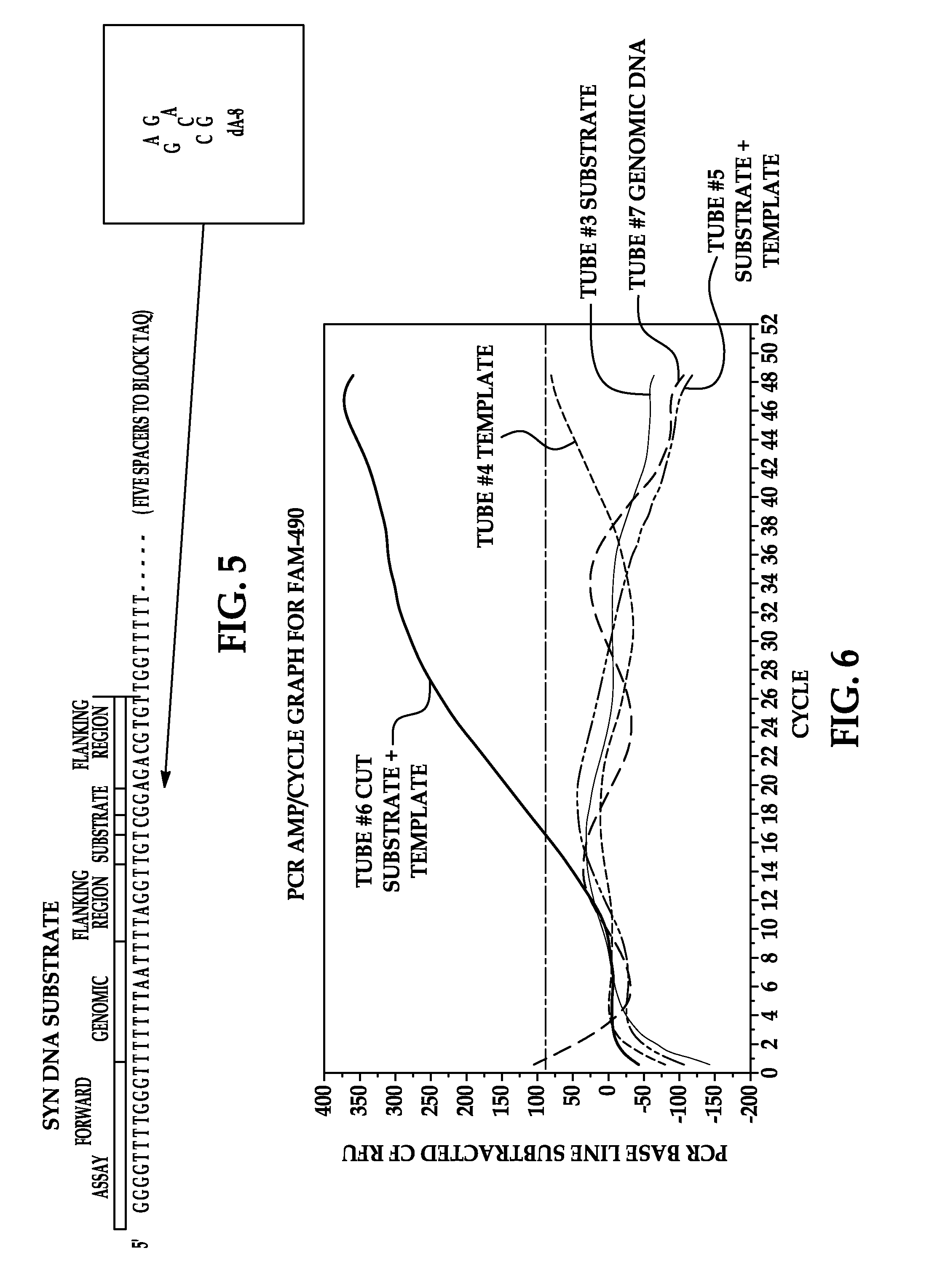Direct quantification of ribosome inactivating protein
a technology of inactivating protein and quantification method, which is applied in the field of detection of enzymes, can solve the problems of cellular destruction, loss of protein synthesis, and high cost, and achieve the effect of reducing the number of ribosomes
- Summary
- Abstract
- Description
- Claims
- Application Information
AI Technical Summary
Benefits of technology
Problems solved by technology
Method used
Image
Examples
example 1
Depurination by Ricin A-Chain
[0076]100 μM of DNA oligonucleotide substrate (SEQ ID NO: 2) is reacted with 0.5 μM Ricin A chain (Sigma Chemical Co, St. Louis, Mo.) at 37° C. for 30 minutes in 10 mM potassium citrate and 1 mM EDTA (pH 4.0). Adenine release is verified with LC / MS.
example 2
Hydrolysis of Product by APE
[0077]To perform the APE activity assay, 1 μl of the reaction product of Example 1 is hybridized to 1 μl of 100 μM template oligonucleotide (SEQ ID NO: 5) (Gene Link, Inc., Hawthorne, N.Y.) by mixing at room temperature. To this 1 unit of APE1, 1 μl of 10× NEBuffer4 (20 mM Tris-acetate, 50 mM potassium acetate, 10 mM Magnesium Acetate, 1 mM Dithiothreitol, pH 7.9 at 25° C.) (New England Biolabs) and 6 μl of molecular grade water is added. Recombinant human APE1 is purchased from New England Biolabs, Ipswich, Mass. (10,000 Units / ml) in 50% glycerol. One unit is defined as the amount of enzyme required to hydrolyze 20 μmol of a 34 by oligonucleotide duplex containing a single AP site in a reaction volume of 10 μl in one hour at 37° C. The reaction mixture is incubated for 1 hour at 37° C.
example 3
Detection by Real-Time PCR
[0078]Following incubation, 5 μl of the reaction mix of Example 2 is added to a PCR reaction mixture (Bio-Rad, Hercules, Calif.) consisting of 12.5 μl Bio-Rad master mix, 1 μl forward primer (SEQ ID NO: 4), 1 μl reverse primer (SEQ ID NO: 3), 1 μl probe (SEQ ID NO: 7), and 4.5 μl water. Real-time PCR is performed on a Bio-Rad iCycler using Taq Polymerase (Bio-Rad). Cycle times are 95° C. for 10 minutes followed by an amplification program of 50 cycles of 3 seconds at 95° C., 5 seconds at 61° C., and 20 seconds at 72° C. with fluorescence acquisition at the end of each extension.
[0079]The ability of a DNA substrate that was simulated to have been depurinated by a RIP and subsequently hydrolyzed by APE was examined to determine its ability to hybridize to the template DNA, followed by extension with Taq polymerase and amplification through the polymerase chain reaction. Oligonucleotide representing RIP depurinated and APE cleaved product is amplified when com...
PUM
| Property | Measurement | Unit |
|---|---|---|
| pH | aaaaa | aaaaa |
| pH | aaaaa | aaaaa |
| pH | aaaaa | aaaaa |
Abstract
Description
Claims
Application Information
 Login to View More
Login to View More - R&D
- Intellectual Property
- Life Sciences
- Materials
- Tech Scout
- Unparalleled Data Quality
- Higher Quality Content
- 60% Fewer Hallucinations
Browse by: Latest US Patents, China's latest patents, Technical Efficacy Thesaurus, Application Domain, Technology Topic, Popular Technical Reports.
© 2025 PatSnap. All rights reserved.Legal|Privacy policy|Modern Slavery Act Transparency Statement|Sitemap|About US| Contact US: help@patsnap.com



